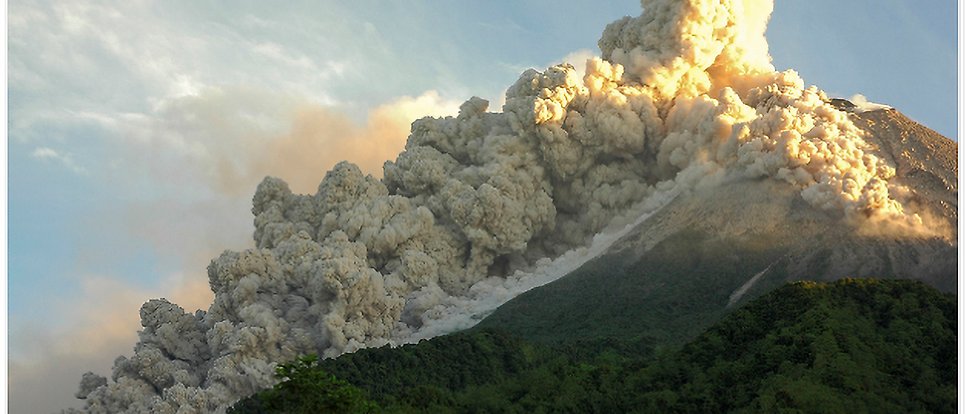A researcher explains: why are some volcanoes extremely dangerous?

A glowing avalanche, a so-called pyroclastic flow, rushes down Merapi's summit. Photo: BPPTKG(Merapi Volcano Observatory)
Suddenly and entirely without warning, the Merapi volcano on the island of Java in Indonesia can erupt violently. In the last 100 years alone, over 1,500 people have died as a result of it. In the “ROTT'N'ROCK” research project, volcano researcher Valentin Troll seeks answers to why some volcanoes are so unpredictable and dangerous.
“We still don't know how Merapi works,” notes Troll, Professor of Petrology at the Department of Earth Sciences.
The area around the almost 3,000-metre-high Merapi is fertile and therefore densely populated. But it is not a safe place to live. Volcanic eruptions and earthquakes are a constant threat. Among the most devastating hazards are the several-hundred-degree hot pyroclastic flows, which during eruptions can travel at high speed down the volcanic slope.
“Volcanic eruptions are characterised by very strong explosions. This means the volcano cannot hold on to the magma and suddenly we get these explosions,” explains Troll.
The volcano is being destroyed
To get a better idea of what is causing these violent eruptions, Troll and his research colleagues have taken rock samples from the summit of Merapi. The samples have revealed something very interesting – that the volcano is being destroyed.
The hot, acidic gases flowing out of the volcano are causing it to disintegrate. The parts that come into contact with the gases break down and eventually become so porous that they crumble apart very easily.
“If this happens, the pressurised magma inside the volcano can no longer be contained. It explodes, which is something that happens without warning. This is not new magma coming up from below, as in many other volcanoes, rather the volcano itself can no longer contain the magma. And that is a very dangerous situation,” says Valentin Troll.
In the new “ROTT'N'ROCK” research project funded by the European Research Council (ERC), he and his colleagues will study these processes to better understand them. Their hope is that this will lead to methods for predicting when volcanic eruptions will occur.
Åsa Malmberg
